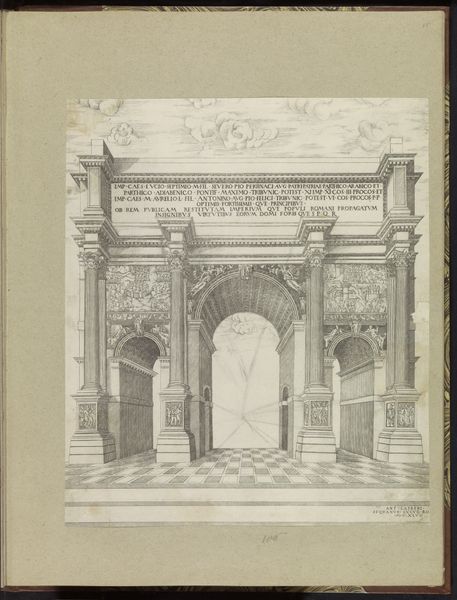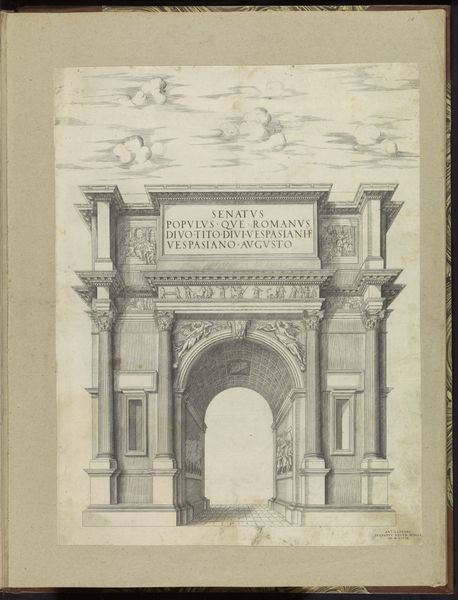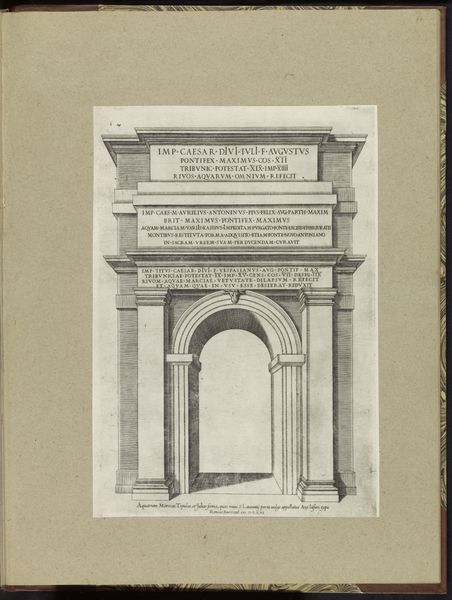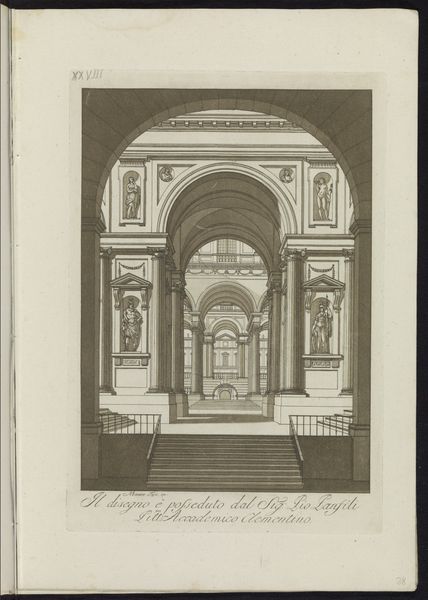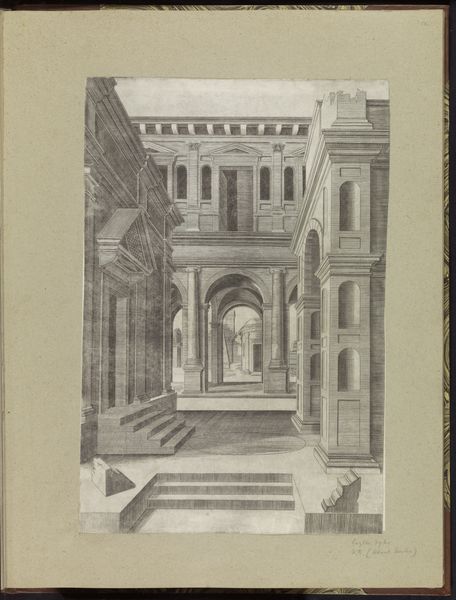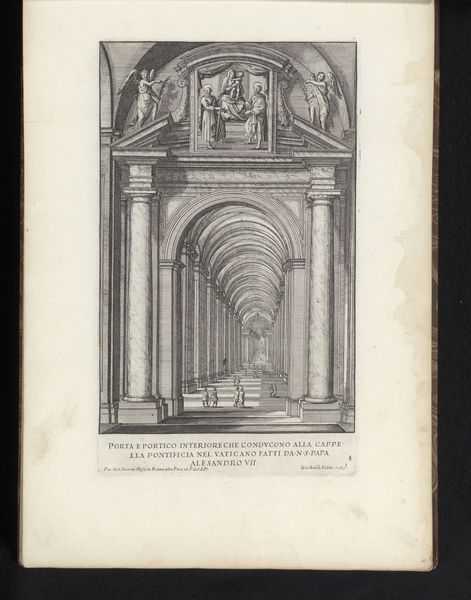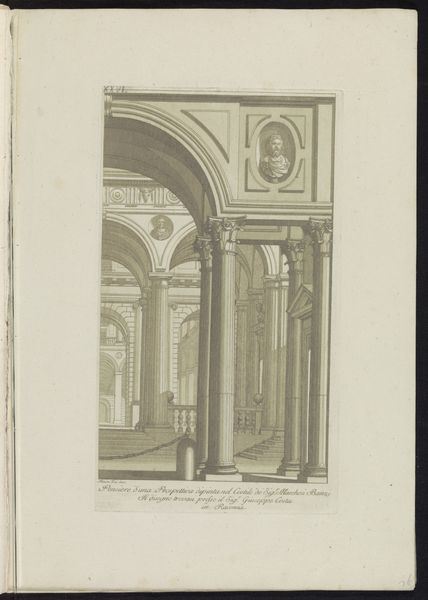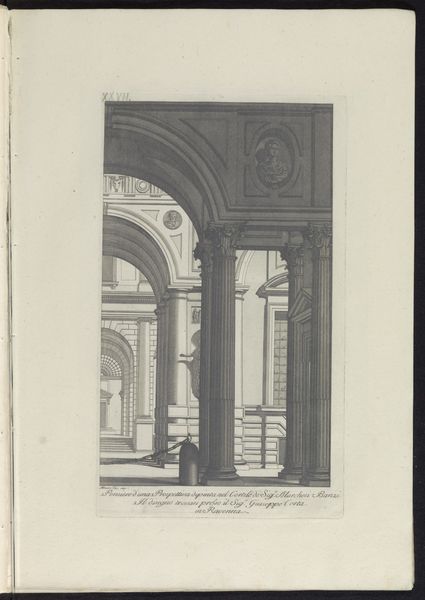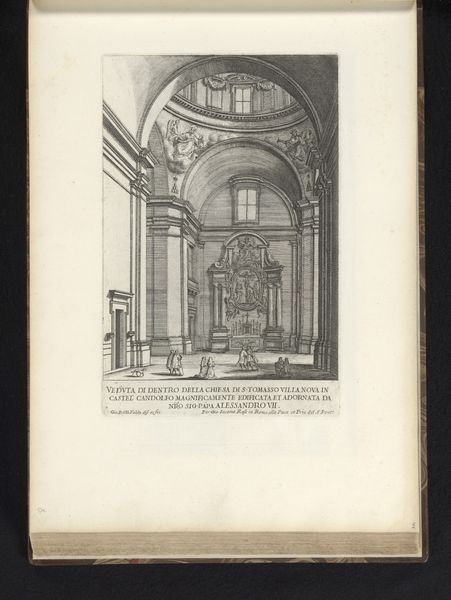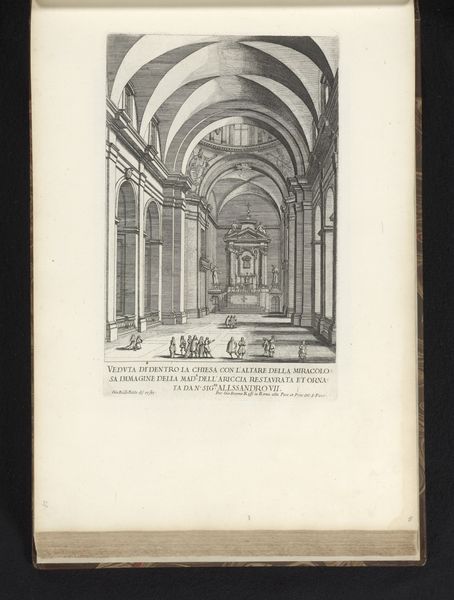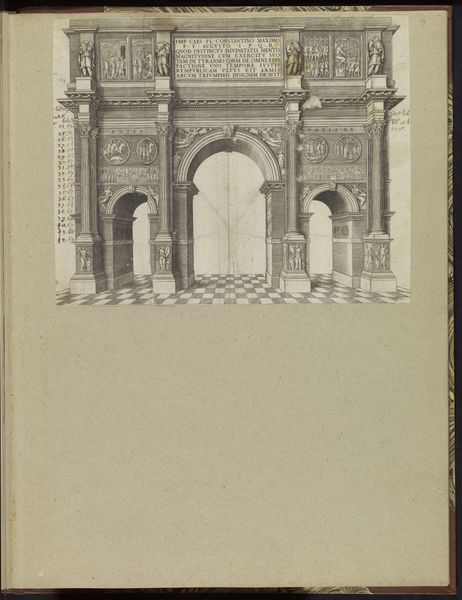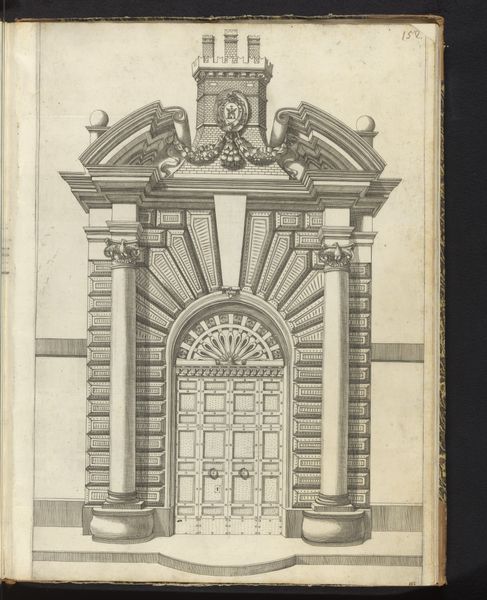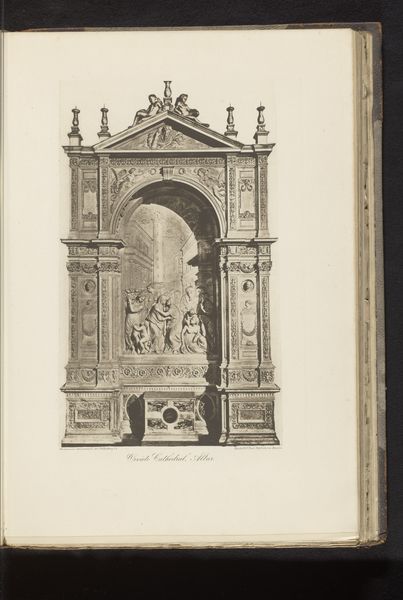
drawing, paper, pencil
#
drawing
#
pencil sketch
#
greek-and-roman-art
#
landscape
#
paper
#
form
#
geometric
#
ancient-mediterranean
#
pencil
#
line
#
cityscape
#
academic-art
Dimensions: height 397 mm, width 338 mm
Copyright: Rijks Museum: Open Domain
Curator: This meticulously rendered drawing captures the Arch of Titus in Rome. Attributed to an anonymous artist working before 1547, it’s crafted with pencil on paper. What’s your immediate reaction to it? Editor: The sheer monumentality, even in sketch form, is striking. But there’s also a sense of coldness. It feels… deliberately detached, almost sterile. Curator: That coolness might stem from its function. This isn't just a depiction; it’s a visual record, almost an architectural study. Note the academic rendering, prioritizing line and form to convey a sense of measured perspective and a very rational assessment. Editor: Precisely! The checkered floor, for instance, feels more about demonstrating perspective than evoking a specific place. And look at the inscription at the top, 'Senatus Populus Que Romanus' dedicated to the divine Titus. It all serves as propaganda for an emperor deified after death, and that arch stands to commemorate imperial victories. The coldness, perhaps, comes from the exercise of power itself. Curator: And yet, even divorced from its original context, certain symbolic elements persist. The arch itself functions as a passageway, a threshold. Visually and psychologically it signifies transition. Think about triumphal entries into Rome: The arch becomes a container for collective memory of power, and also transition and conquest. Editor: So, even if this particular drawing feels somewhat clinical, the subject itself pulsates with layered cultural meaning. I also cannot avoid looking at the political use of art throughout history and consider it almost an expectation that these objects reflect the goals and ambitions of who commissioned them. Curator: I agree. Its purpose has been absorbed and reshaped by time and artistic intervention. I am left contemplating how even the most seemingly straightforward depictions carry reverberations of power, memory, and belief. Editor: Indeed, tracing the artwork to an anonymous author creates a sense of mystery that contrasts with the subject depicted with precision and purpose.
Comments
No comments
Be the first to comment and join the conversation on the ultimate creative platform.
